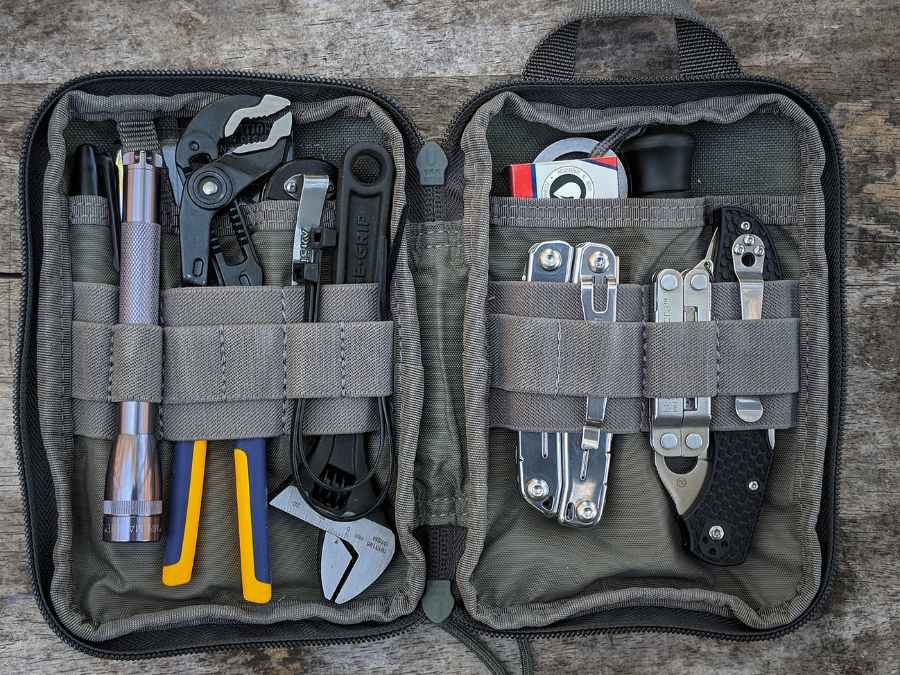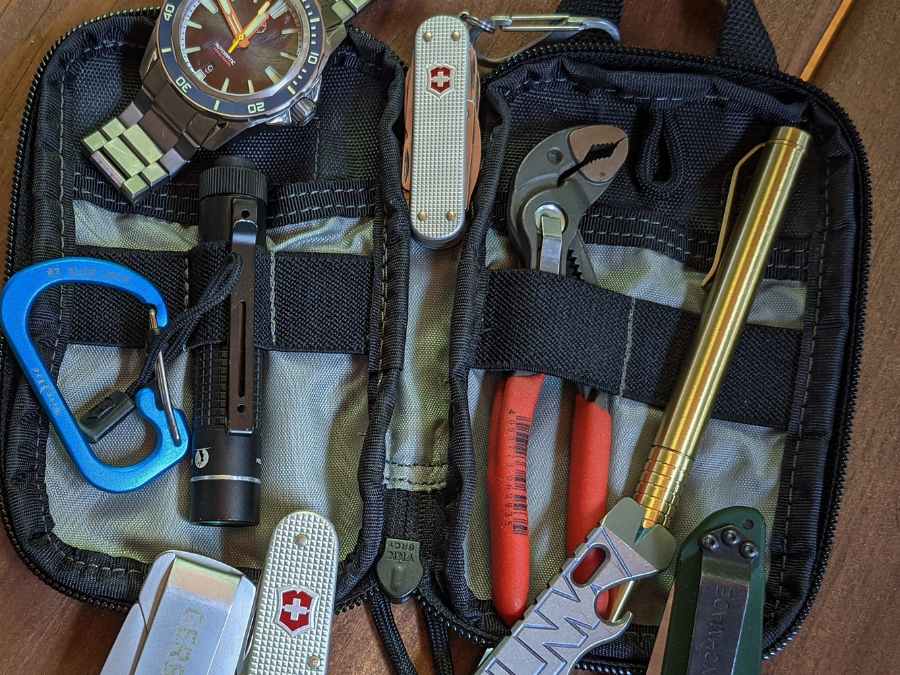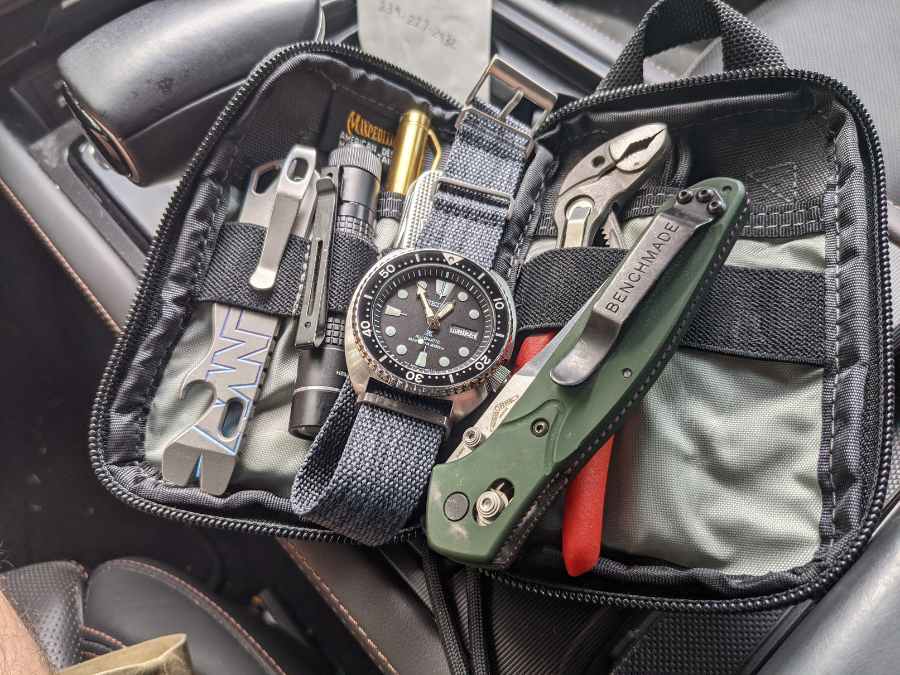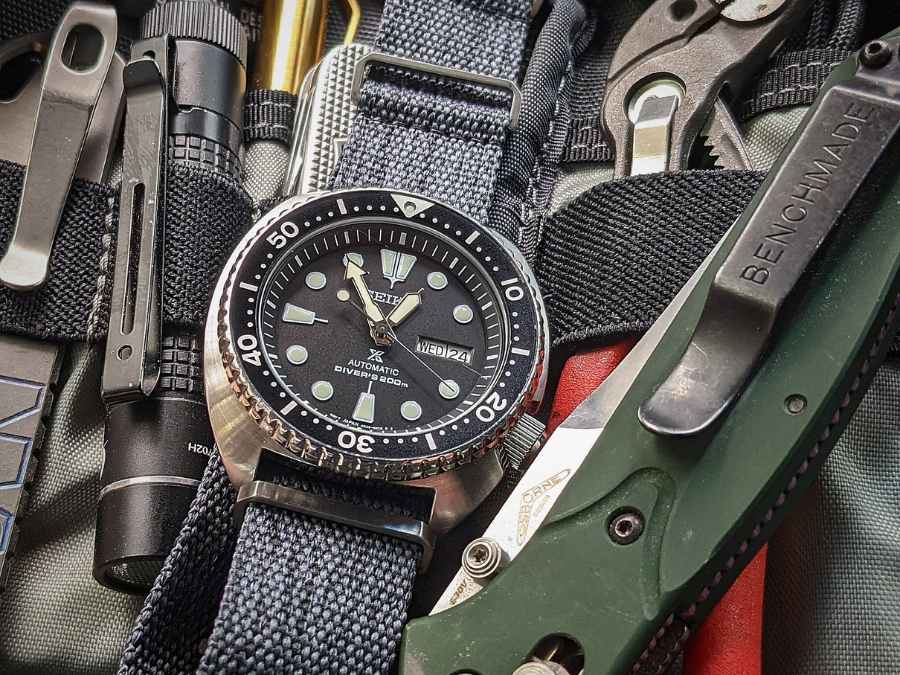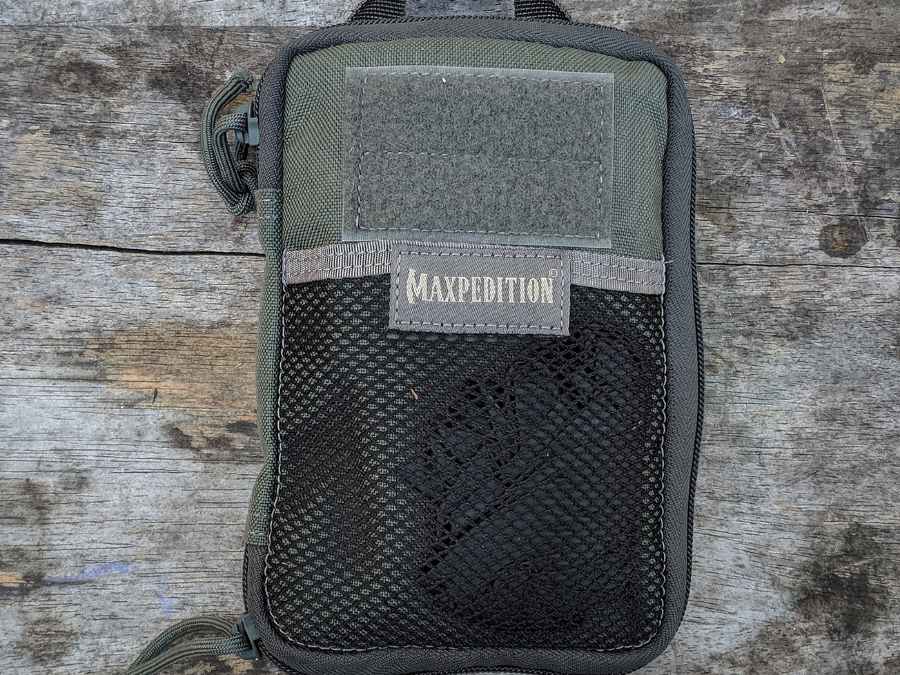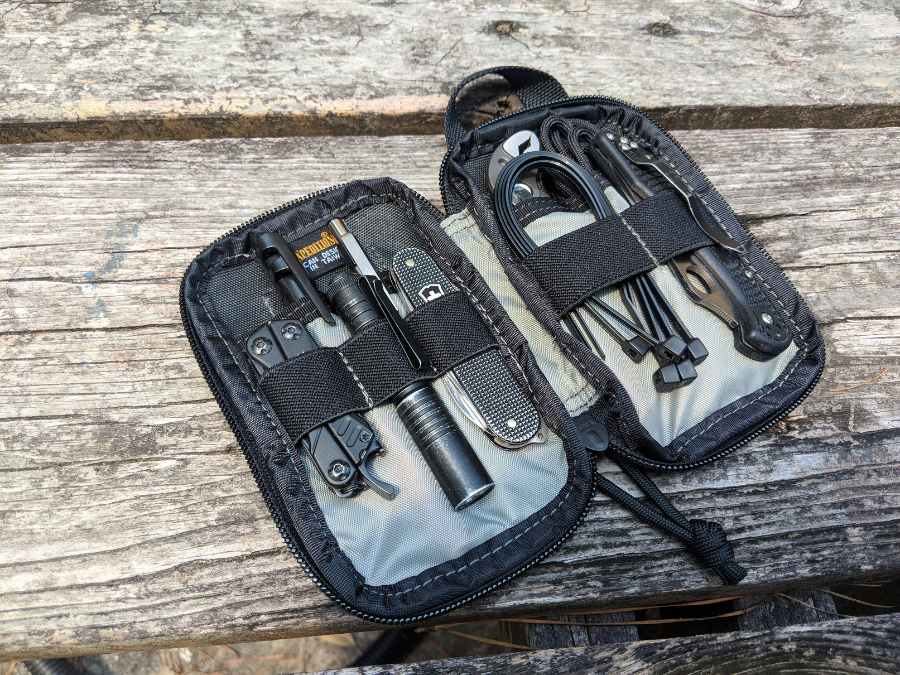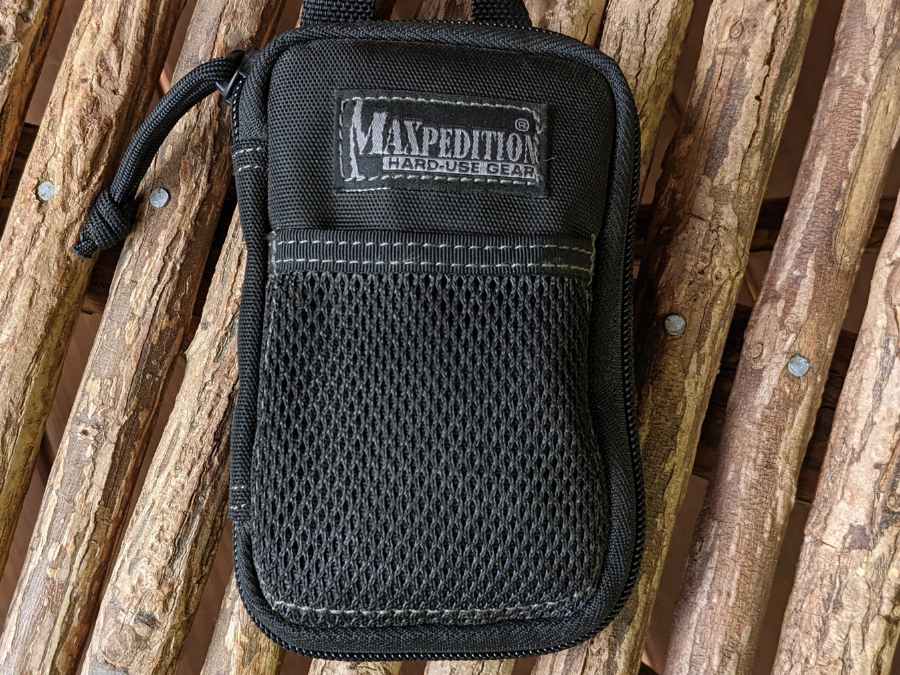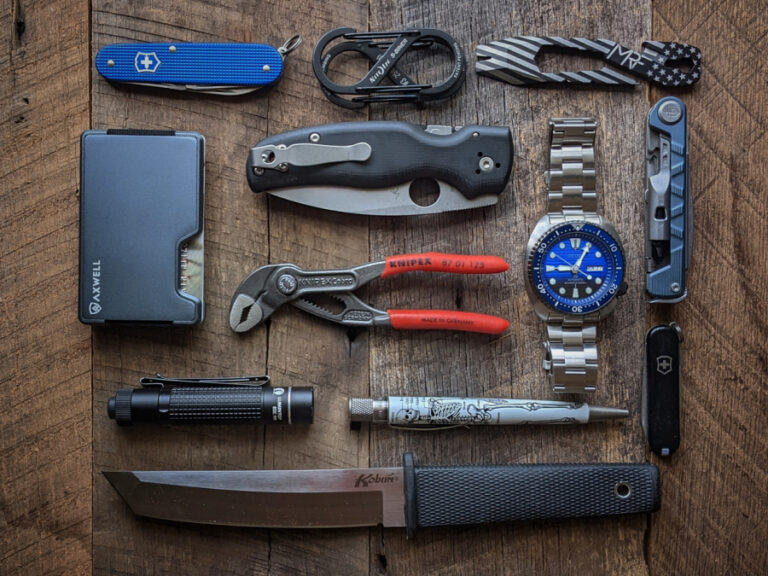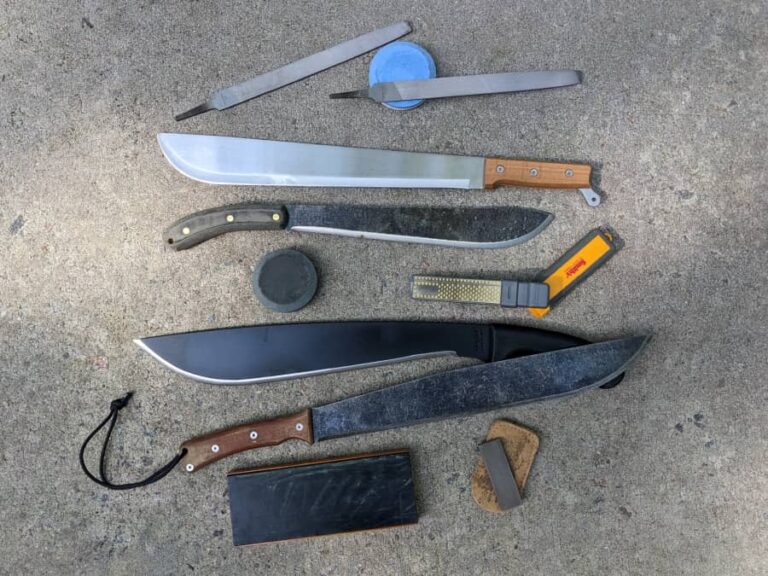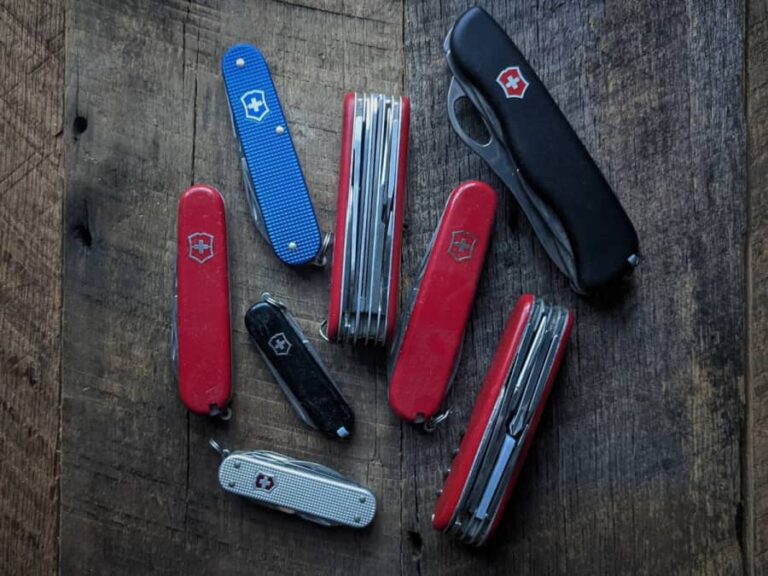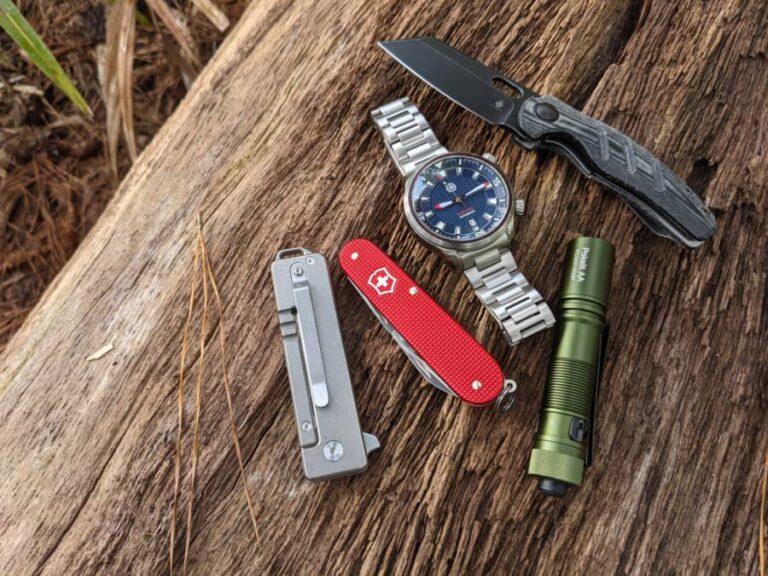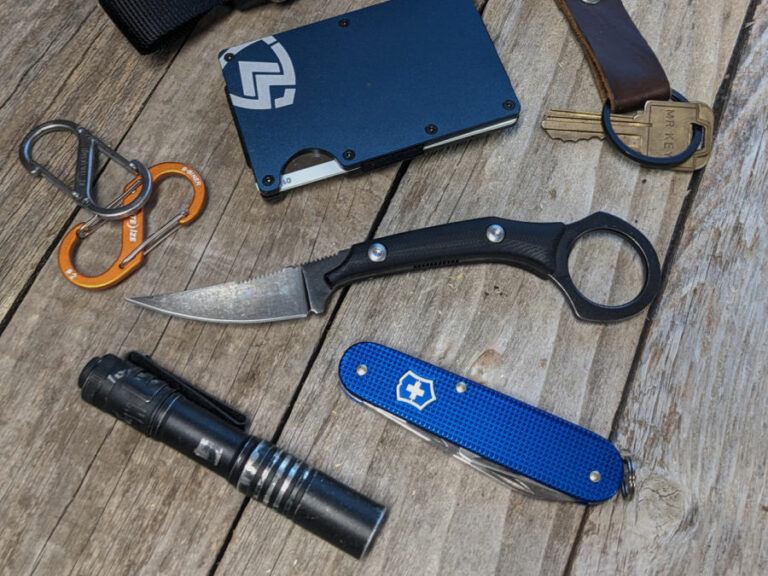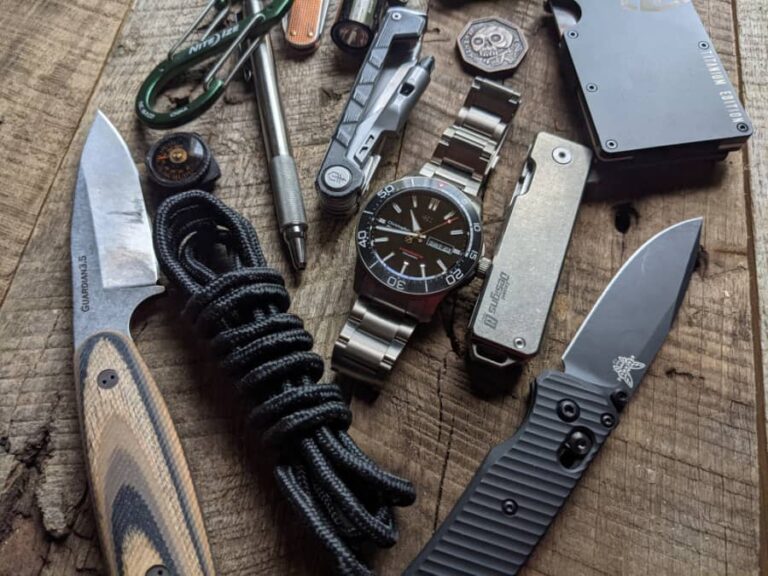How To Make An EDC Toolkit
While preparing for a recent road trip, I realized that I somehow always seem to either have too many tools, or not enough. Although I always keep an EDC kit in each car, I also like to have more than just the basics for an extended expedition.
In the past, that has usually meant filling the back of my enormous 12-passenger 3500 Express van with every tool I could conceivably need for every scenario that might unfold. But this time, I stopped myself and realized… there has to be a better way.
And so, down the road to making the perfect EDC toolkit I went.
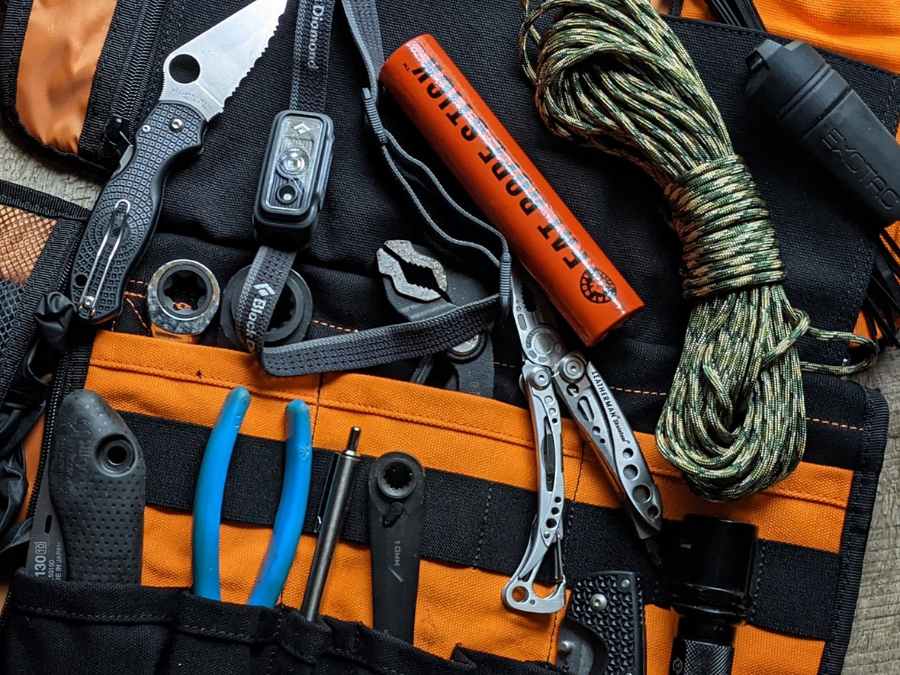
Three Tiers of EDC
Before getting too deep into the specifics of building an EDC toolkit, let’s talk about what are generally considered to be the three tiers of EDC, and where your toolkit fits in. The three basic EDC levels are:
- Primary EDC (also called first line EDC) – This is the EDC that you carry in your pockets or on your person on a daily basis. It is readily accessible at all times, and you don’t leave the house without it. For most folks, primary EDC doesn’t really change much from day to day, though it may evolve over time.
- Secondary EDC (also called second line EDC) – This is an assortment of gear and/or supplies that are supplemental to your primary EDC. Secondary EDC is usually carried in a separate container, organizer or bag, and may not go with you 100% of the time, but is still compact enough that you can toss it in your backpack, briefcase, cargo pocket or large coat pocket.
- Extended EDC (also called an operational bag or a 3-day bag) – Generally consisting of a backpack-sized amount of gear (more than than you’d want to carry on a daily basis), your Extended EDC might live in your car, in your garage, or in a closet or basement. It may contain extra tools, survival/emergency supplies, or other “just in case” gear.
An EDC toolkit would fall into the second or third category. Either way, your EDC toolkit is meant to supplement, not replace, the regular daily pocket contents that make up your primary EDC. Whether it is considered secondary or extended EDC has to do with its size and whether you plan on carrying it with you most of the time, which brings us to our next consideration…
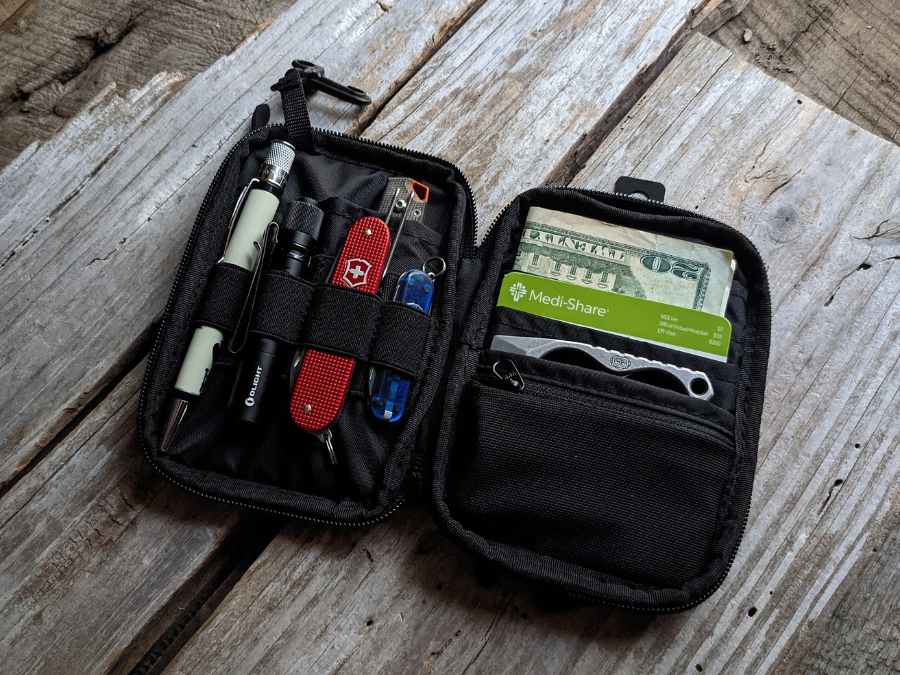
How Big Is an EDC Toolkit?
In short, it can be any size you want it to be, from a full-sized duffel bag right down to a tiny pouch with a few tools you can wear on your belt. Personally, my impetus for taking a deeper dive into putting together a quality EDC toolkit was a desire to make something in-between. Not too much, and not too little.
Instead of throwing a whole load of tools into a bag, I wanted to curate something a bit more specific and concise. A big part of the ethos behind EDC in general is to carry what you need, without weighing yourself down with a bunch of stuff you don’t. I think that also applies to making an EDC toolkit.
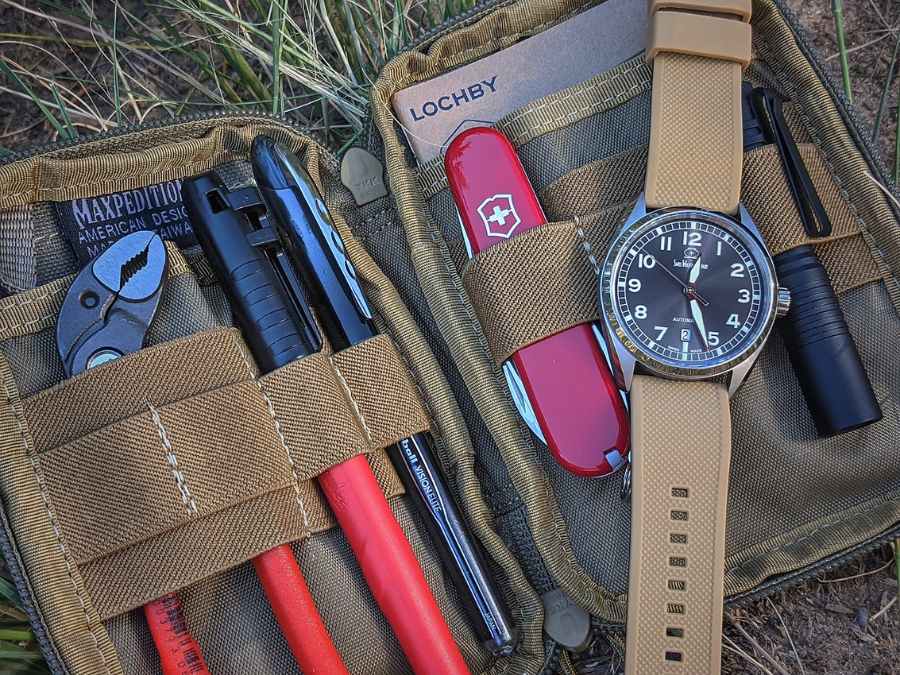
Choosing a Container for Your EDC Toolkit
I’m a big fan of EDC pouches and pocket organizers. I own a bunch of them in different sizes, and I keep them in different places for different uses. Maxpedition pouches are kind of the gold standard, and their “Fatty,” “Beefy” and “Chubby” series of organizers are great for putting together an EDC toolkit that has a fairly small profile but can still contain a lot of stuff.
There are also a lot of other brands besides Maxpedition that make cool organizers that can be used for EDC toolkits. I’ve personally used and become a fan of Roaring Fire Gear’s pouches and roll bags, and their new Mini Tool Roll Bag is what I ultimately ended up using to build my current EDC toolkit.
Ultimately, you should choose a container or organizer that is the right size for the amount of tools you want to carry, and has organizational features that you like. For me, I find that a smaller sized tool roll bag is easy to stow in my car, is great for organization, and lays out flat so I can easily see everything that’s in it.
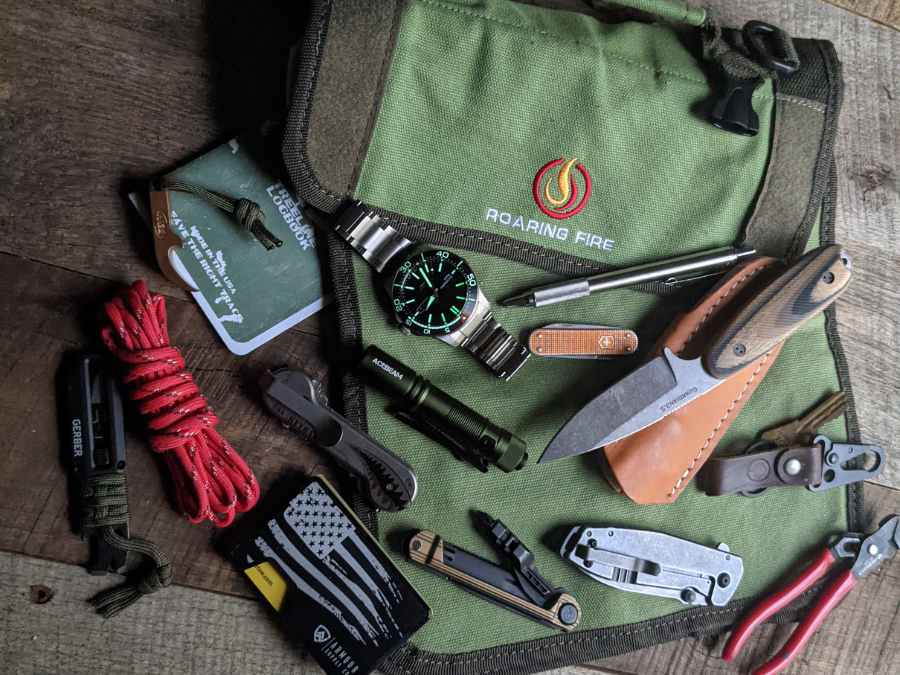
Selecting Tools for EDC
At some point, I’ll publish a full rundown of what goes in my personal EDC toolkit. For making your own, it’s most important to focus on what types of situations you most want to prepare for. A toolkit for around the house may look a little different than the toolkit you keep in your car.
One thing to remember is that an EDC toolkit can easily become redundant if you’re not careful. If you already carry something in your pocket every day, you don’t need another one in your toolkit. If, like me, you never leave the house without a knife, flashlight and multi-tool, you can safely cross those items off the list of gear you need in your toolkit.
Having said that, if you carry a small multi-tool in your pocket and want to have a bigger and more versatile one in your toolkit, that’s another story. The idea is to give yourself everything you need with as little repetition as possible.
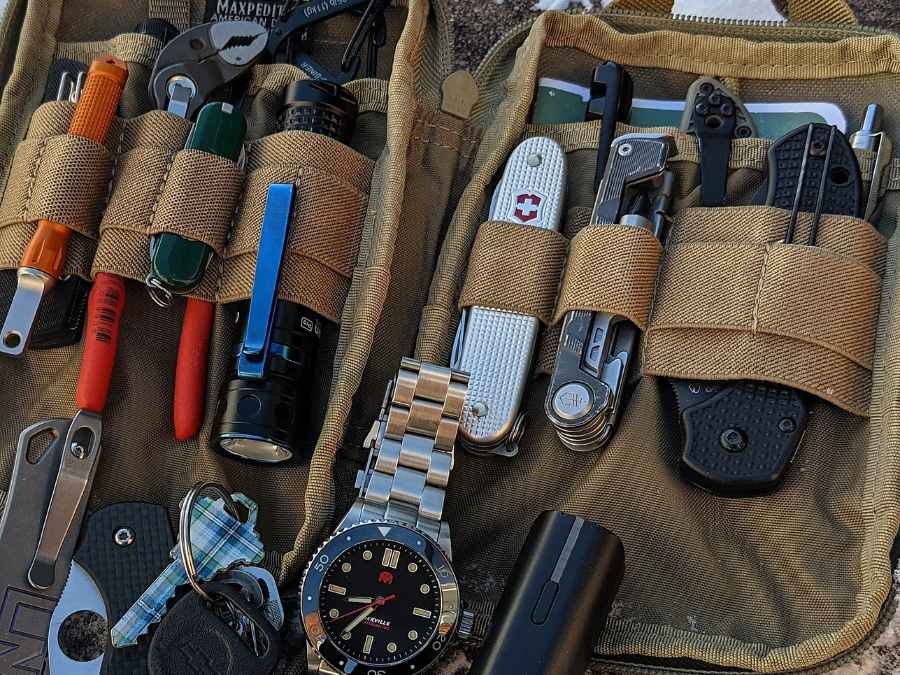
Assuming you don’t already carry these items in your primary EDC, the contents of your EDC toolkit might include:
- Pliers
- Adjustable wrench
- Socket wrench set
- Screwdriver or mini driver set
- Hex wrench set
- Wire cutters/strippers
- Wire
- Duct tape and/or electrical tape
- Zip ties
- Pry bar
- Pen/pencil and paper
- Flashlight
- Knife
- Ruler or tape measure
- Scissors
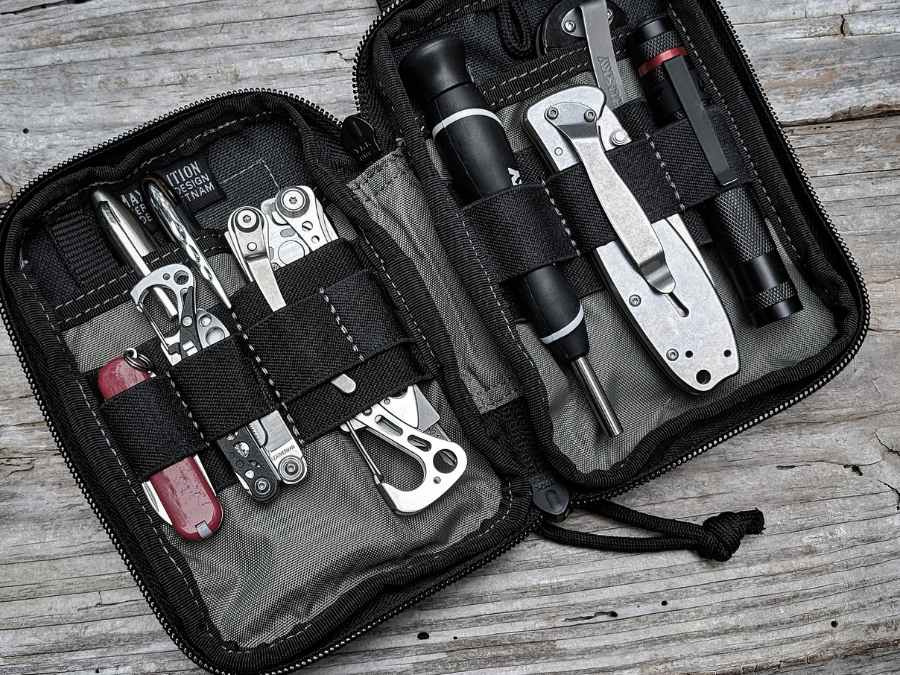
Obviously, your EDC tool kit may contain only a fraction of these items, or it may contain several items not listed here. You do you! One of the great things about EDC is that you can experiment and learn what works best for you.
A word on multi-tools: they have pros and cons. At the end of the day, I personally find that there are individual tools that each do their jobs better than a multi-tool can do. Having said that, multi-tools are also huge space-savers, so they can be great additions to an EDC toolkit, especially if you’re trying to make one that isn’t too big or bulky.
I also like to think of an EDC toolkit and an EDC survival/emergency kit as two different things, even though there may be some overlap between the two. It’s never easy to get everything you need in one organizer, so if you need to make multiple kits for various situations, that’s a great way to go.

Blair Witkowski is an avid watch nut, loves pocket knives and flashlights, and when he is not trying to be a good dad to his nine kids, you will find him running or posting pics on Instagram. Besides writing articles for Tech Writer EDC he is also the founder of Lowcountry Style & Living. In addition to writing, he is focused on improving his client’s websites for his other passion, Search Engine Optimization. His wife Jennifer and he live in coastal South Carolina.

